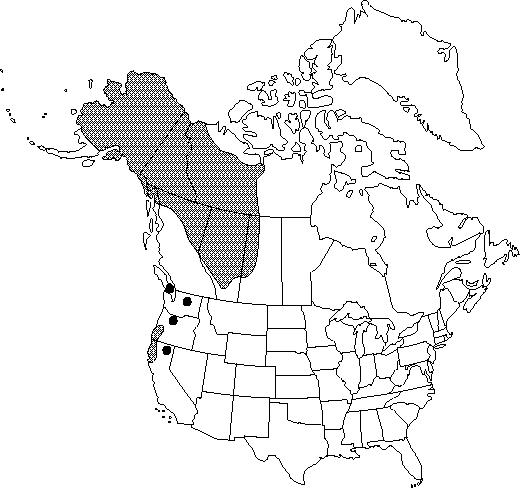Difference between revisions of "Alnus alnobetula subsp. fruticosa"
Willdenowia 41: 129. 2011.
GeoffLevin (talk | contribs) (Corrected species name from Alnus viridis to A. alnobetula) |
GeoffLevin (talk | contribs) m (GeoffLevin moved page Alnus viridis subsp. fruticosa to Alnus alnobetula subsp. fruticosa: Accepted name change) |
(No difference)
| |
Revision as of 15:58, 6 June 2022
Shrubs, spreading, to 3(–6) m. Bark gray-brown; lenticels pale. Leaf blade dark green, broadly ovate, 5–8(–10) × 3–6(–7) cm, base rounded to nearly truncate or nearly cordate, margins flat, sharply and densely doubly serrate, apex acute to short-acuminate; surfaces abaxially glabrous to sparsely pubescent, especially on veins, moderately to heavily resin-coated. Inflorescences: staminate catkins 3.5–6 cm. Infructescences 1.2–2 × 0.5–1.2 cm; peduncles 1–3 cm. 2n = 28.
Phenology: Flowering spring.
Habitat: Rocky or sandy coasts, stream banks, lakeshores, and damp, open areas
Elevation: 0–500 m
Distribution

Alta., B.C., N.W.T., Sask., Yukon, Alaska, Calif., Oreg., Wash., n Asia.
Discussion
This primarily subarctic Asian subspecies has long been mistaken in western North America for Alnus viridis subsp. crispa, which it closely resembles, or for subsp. sinuata (J. J. Furlow 1983b). It can be separated from the former by its larger and more coarsely toothed leaves, and from the latter by its much thicker, mostly single-toothed leaf blades.
Selected References
None.